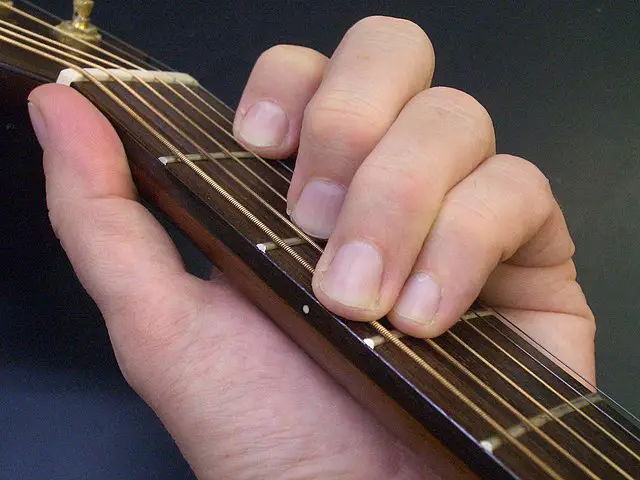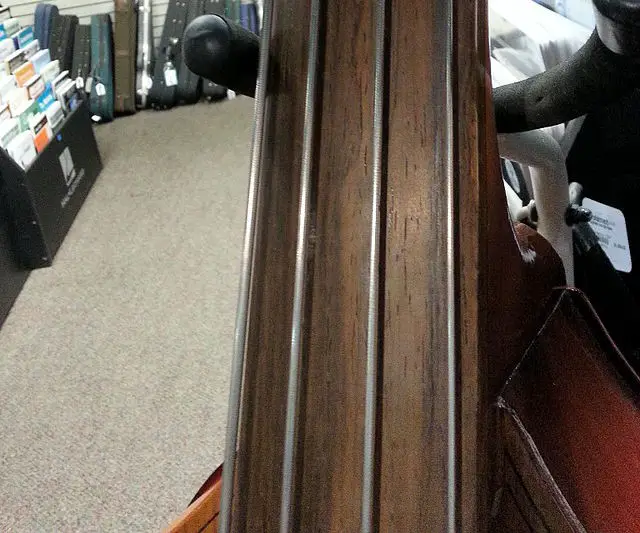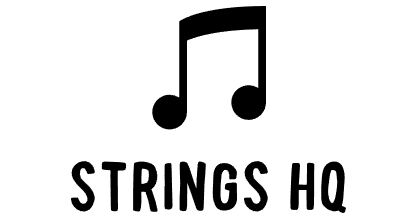Initially, you might think frets would be far easier than relying on the accuracy of finger positions to produce a note. We traditionally associate frets with the Guitar rather than the Violin for good reason. There are many advantages to a Violin being fretless, such as the ability to produce microtones and vibrato.
In this article, we have a look at the reasoning and history of violin’s fretless design compared to fretted instruments like guitars, ukuleles, mandolins, and the likes.
Summary
Violins don’t have frets. Frets in a violin limit the ability of the musician to express their musical experience. It’s actually easier and more flexible for a violinist to play the violin without frets. The lack of frets allows for a wider range of notes and sub-notes. However, the pitch of the note created relies on the accuracy of the Violinists finger position rather than permanently placed frets.
Table of Contents
Why Are Violins Fretless?
Before we get to our answer, you might ask yourself, “What are frets, exactly? And what do they do?”
If you look at a string instrument, the fingerboard or neck of the instrument might have small metal strips on it. Those metal strips, also known as frets, don’t exist for all string instruments.
The existence of a fret is all about standardizing your stroke or note. If you’re aiming for a certain note and you were a little high on the frequency, it will lower the frequency for you, and vice versa.

In the old days, strings and frets were both made of the guts of animals such as sheep and cows. This type of string was ironically called “catgut.” Also, it wasn’t reserved for violins only. It was also used for harps, lutes, cellos, double basses, and acoustic guitars.
There’s a lot of fret types and arrangements available based on temperament, but the standard temperament, or the 12-note temperament, is the most famous one.
A fret was typically made by wrapping the catgut string multiple times around the neck of the violin to thicken the fret.
The Removal of Frets from the Design of the Violin
Since the early musical instruments were made, playing music has been a tough journey for a lot of those early musicians. That is why some implementations were made in the structure of the musical instruments themselves throughout history.
One of the most important and early implementations was the frets on the fingerboard of string instruments.
If you look back, you would find that most string instruments had frets, including violin, guitar, cello, and double bass. But what about now?
Violins did have frets back in the old days from the 15th to the 18th century. It wasn’t exactly called a violin back then; it was called a viola, slightly bigger than a modern violin. Violas used the kind of catgut strings in other string instruments.
Some inconveniences regarding the idea of a fret on a violin appeared over time. For example, strings were deteriorating quickly and sometimes were quite expensive (when they were made of ivory).
This led to the discovery that playing without frets was a lot more flexible and easier for violinists.
It gave the violinists a wider range of notes and sub-notes to play. This assures that the musician wouldn’t be stuck with the number of standardized notes determined by the frets. Although vibrato can be achieved through frets, the ‘wobble’ sound created is far clearer and meaningful with a fretless design.
Violin strings are quite delicate compared to the guitar, cello, and other instruments. Aside from its natural fragility, having a fret to rub the strings all the time will make it deteriorate even faster.
Going through the classical period, frets disappeared from almost all violins. This change was because the kind of music that was made needed the flexibility and range of a fretless violin.
An example of the flexibility of a violin would be that on a violin, you can do both an F and E’ (E sharp). On the other hand, on a guitar, frets make them the same by standardizing the E sharp into an F.

How Do Violins Work Without Frets?
Violinists slide their violins in every direction. So, imagine if you have bumps in every direction, will you be able to play smoothly?
Unlike guitars, the sound of the violin is about the sustainability of the flow, through the constant contact of bow on string. In a single stroke, the player should be able to hit the note they want without any restrictions from the frets.
Without frets, the violinist has full flexibility to shorten the string in order to produce the note or tone they need.
The violinist’s finger position needs to be exact and accurate to shorten the string and produce a tone rather than relying on the permanent position of the frets.
Note that a lot of violin techniques are mainly based on its lack of frets. This distinguishes the violin from almost all other string instruments.
Does the Violin Have Fret Markers?
For people who want to be accurate and want to have standard notes or intonations, there are products known as violin frets markers or violin fingerboard markers, such as this one.
It’s not a physical fret. This type of fingerboard marker is perfect to visualize the notes. It’s just a plastic wrap around the neck of a violin to help you see where to press down or move your bow. If you don’t want to buy it, you can make one on your own with the aid of this guide.
Some violin instructors recommend this fingerprint marker for beginner violinists. It’s an indicator that helps you play the right notes, yes, but it’s still your responsibility as a violinist to know how to hit the right spot on the violin’s neck at the right time without help.
You will be the one to determine all the sharp and flat notes, just like you can do with a fret in a guitar.
Fret markers aren’t usually allowed during professional rehearsals or competitions because advanced Violinists would rely on muscle memory rather than visual aids.
Is It Difficult to Play the Violin Without Frets?
Having frets on violins is quite tricky. Many professionals would find a fretted violin a horrifying idea.
Having frets will make it almost impossible to perform a lot of major techniques because they’re all based on the accessibility to a wider range of notes.
Also, by design, higher notes’ frets on a violin are hard to place. This is why some major frets in the guitar are not found in the violin.
Training your muscle memory to know the place of every correct note is a hard process that takes a long time of training and making mistakes. This is exactly why the violin might be considered difficult to play.
You have to trust your instinct and memory, then play the piece and see if you’re hitting the right notes.
Is It Easier to Play With Frets?
If we’re to say that you’re playing a fretted violin, you’ll notice how this makes it a lot easier to visualize your notes (and play in tune) rather than playing blindly.
Thus, having a fretted violin would be considered a shortcut in the eyes of some professional violinists.
New violinists will find it a lot easier to train with frets. This is because frets would make it easier for muscle memory and eye-hand coordination to memorize the positions of each note.
This would make violin accessible to even more people to learn without being scared of the fretless stigma.
Is It Possible to Play Out of Tune on Violin?
Playing out of tone is a major issue for violinists, especially new violinists. Determining where to put your finger to get the right sharpness or flatness of a note is a tricky concept.
It depends on one’s ability to master eye-muscle coordination and have good muscle memory to memorize each note and where it’s placed on the instrument.
Playing out of tune is a Violinist’s mistake for not knowing where the right point to press down the string to get a perfect note is (not sharper or flatter than it needs to be.)
Playing out of tune can happen for all kinds of reasons. If you want to catch the instances where you’re out of tune you should record your playing and listen to it mindfully. You will know where you went off the right track. More importantly, keep practicing as much as you can!
Why Do Guitars Have Frets But Violins Don’t?
Playing the guitar revolves around intermittent or individual strokes. We count each note as a stroke. A single stroke is the sound produced after the string is released.
This type of playing and instrument structure makes it better to have frets to help control and perfect the intonations of each individual stroke.
Aside from passively correcting notes, frets make the whole experience of playing chords a lot easier and accurate.
Standardizing these notes makes it easier for a guitar player to hit the right note, which leaves them the job of sequencing those notes.
Using frets makes your intonation as standard as a piano. This is because even the half steps that you might make while playing guitar are forced into a single step.
The same standardization of intonation due to frets that happens with guitars goes with other instruments such as lutes.
Final Thoughts
So, are violins fretless? The answer is yes. Unlike guitars, ukuleles, mandolins, and many other stringed instruments, violins don’t have frets because it hinders the player’s flexibility and range.
The lack of strings allows for more flexibility and a wider range of notes and sub-notes.
